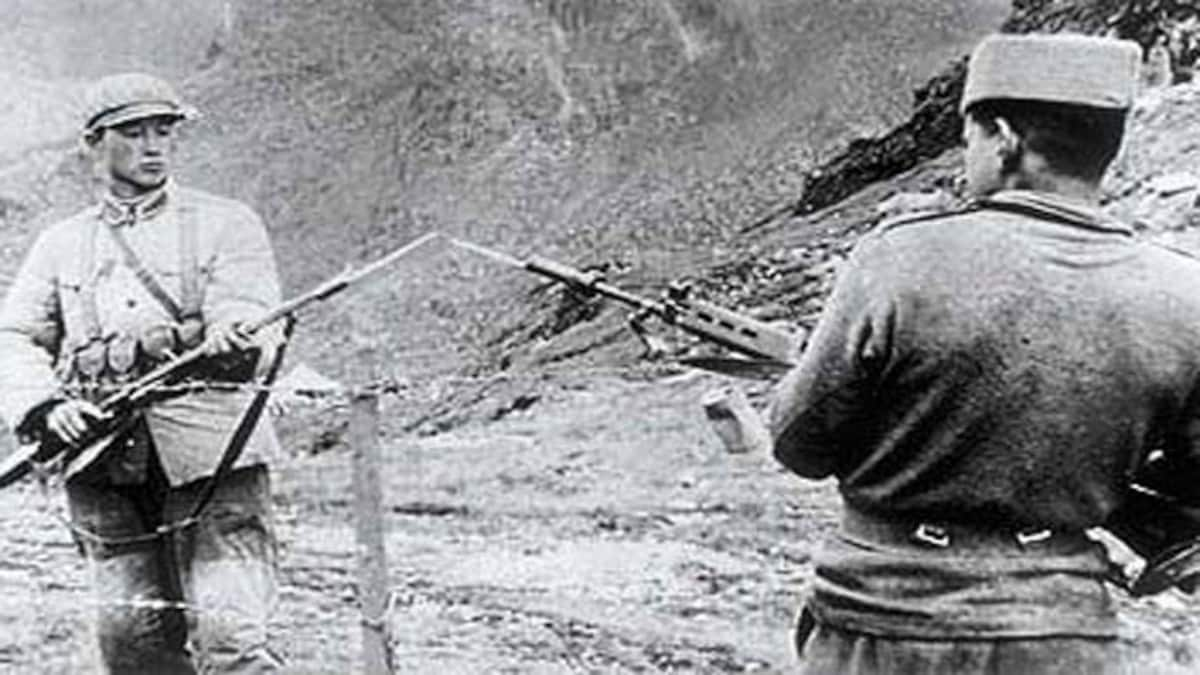This is a battle which the Chinese remember but not many Indians. The bloody nose that the People's Liberation Army (PLA) got at Cho La and Nathu La on the Sikkim border in 1967 ensured that China has not fired a single bullet at India in more than 50 years. Emboldened by the 1962 war, China, driven by territorial ambitions and intimidating habits, had been snipping at various points on the Indian border.
The Indian Army decided to put an end to the daily nuisance by erecting an iron fence on the Sikkim border. The Chinese opened artillery fire, killing dozens of unprepared Indian soldiers who were busy constructing the fence in an open area. Satisfied, the Chinese thought they had taught the Indians another lesson. This bravado stemmed from a notion that India could be bullied because it had lost the 1962 war and was forced to fight another one by Pakistan in 1965.
Also, between 1962 and 1967, the Chinese were used to opening fire at the border, expecting not much retaliation. However, when the soldiers died and the message reached Delhi, Prime Minister Indira Gandhi was in a Cabinet meeting. She immediately gave her assent to retaliation through artillery. Col Anil Bhat, who has served in the infantry and the armored corps, says: "Once the Indian forces retaliated, there were 400 Chinese bodies, 25-odd army vehicles blown up and numerous bunkers destroyed.
This was a rude shock to the Chinese. They realized that it was not 1962. Since 1967, the PLA has not dared pull a trigger on the Indian soldier." These border skirmishes lasted about two months but delivered a clear message to the Chinese. About the recent incursions by the Chinese in Ladakh, he says that since the 1967 defeat, the Chinese have resorted to different tactics. "They will intimidate, harass, sneak across the border, play propaganda games and try to scare the adversary.
However, the PLA does not have the valor to fight a war. The Chinese army is more about fanfare, lots of equipment and lots of drama. But they are allergic to the bodies of their dead soldiers," he says. Going back to the 1962 war, Col Bhat says that the defeat in 1962 was not because of soldiering or lack of valor, but because of disadvantage. The Indian soldier was woefully under-armed and under-clothed. But the Indian Army even at that time was a battle-hardened army.
"We had 15 lakh soldiers in World War-I and 25 lakh in World War-II. The Indian Army is acknowledged as one of the finest armies in the world. We were commended highly by the French and other European nations for our role in the World Wars," says Col Bhatt. He adds that the experience of successive wars, along with those imposed on India by Pakistan, remains etched on the Indian military. On the other hand, the Chinese army fares poorly in terms of fighting experience.
An example is the 1979 war in which China invaded Vietnam with lakhs of soldiers, tanks and artillery. An invasion which proved costly to the mighty communist nation. After that one-month ended, China brought home an estimated 28,000 dead and 43,000 wounded soldiers as compared to Vietnam's estimated 20,000-35,000 dead. As the war was fought in Vietnam, the toll included both soldiers and civilians.
It is believed much of the resistance to the PLA came from Vietnamese militia who supported their army. Globally, the PLA became known as "paper tigers," while China became tainted as an aggressor prone to war with a smaller neighbor, merely "to teach a lesson," an act it repeats often against neighbors. Indian and foreign experts are unanimous that India can take on China militarily.
Moreover, the country has strengthened infrastructure on the borders. Experts believe that the 255-km long strategic Darbuk-Shyok-Daulat Beg Oldi (DSDBO) road, with many bridges, is bothering China. The DSDBO road connects Leh to Daulat Beg Oldi, the northern-most point on the Indian border.
China is worried also because India has reportedly carried out exercises on the border. Not satisfied with just the DSDBO road, India is constructing an alternative route to Karakoram Pass to keep an eye on Chinese activities. Experts say that this access to the borders, and the capacity to move men and materials quickly, has rattled China. India has conclusively proven to the Chinese that it too can move large numbers of men and materials on the border.
At the same time, it has signaled that it would like to maintain diplomatic niceties and resolve border issues through talks. Even the Indian soldiers use non-threatening protocols to deal with the belligerent Chinese. If they transgress, Indian soldiers may use hands to signal resistance, then may grapple and physically stop them but never use firearms.
The Indian soldier, aided with subtle diplomacy from the country, has largely helped maintain peace on the fraught India-China border. It would help China to remember its defeats from the 1967 battle with India, and the 1979 invasion of Vietnam and show restrain for the sake of bilateral relations and global peace.




















